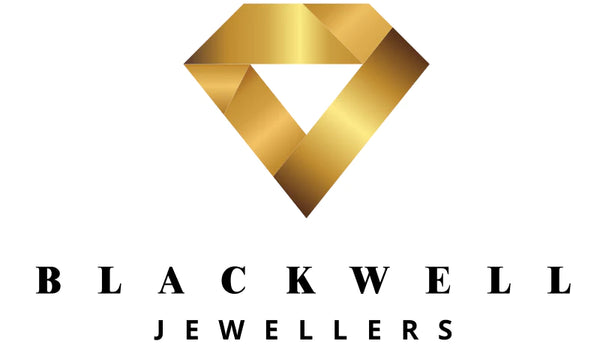Picking out an engagement ring isn’t just about the sparkle. Pretty soon, you end up staring at two classic choices: gold or platinum? Both look stunning. Both have stood the test of time. But they each have their own vibe, their own strengths, and their own story.
At Blackwell Jewellers, we see couples wrestling with this decision all the time. Some people love the cosy, golden glow of yellow gold. Others can’t get enough of platinum’s cool, understated style. There’s no secret formula here. What matters is what works for you—your lifestyle, your style, and the story you want your ring to tell.
So, here’s what we’re going to do: we’ll lay out the real differences between gold and platinum. We’ll talk cost, durability, how they look, how they’re made, and even which is better for the planet. By the end, you’ll feel confident choosing the metal that’s right for you—no second guessing.
💡 Blackwell Tip: If you’re still exploring shapes and designs, read our main guide — How to Choose the Perfect Engagement Ring in 2025 — for a complete overview of diamond cuts, metals, and trends.
 “Gold or platinum? The answer lies in what feels right for your story.”
“Gold or platinum? The answer lies in what feels right for your story.”
Gold vs Platinum – The Basics
Let’s talk about what really makes gold and platinum different. Sure, they both look stunning and luxurious, but they act nothing alike once you actually wear them.
Gold’s been a symbol of love and achievement forever. Its warm shine gives rings that classic, romantic feel. You get options too—yellow, white, or rose—so it’s easy to find a style you like. Most engagement rings use 18ct gold. That’s the sweet spot: pure enough to look great, tough enough to last. Gold’s also lighter than platinum. You’ll barely notice it on your finger, and if you ever need to resize or fix it, jewellers find gold much easier to work with.
Platinum’s a whole different story. It’s naturally white, rare, heavier, and incredibly dense. People love it for its strength and its purity. This metal isn’t just about the look—it’s built to last a lifetime. Platinum stays bright without any extra plating, and if your skin’s sensitive, you don’t have to worry; it’s hypoallergenic. So, while both metals look gorgeous, they each offer something unique once you move beyond that first impression.
💡 Blackwell Tip: Think of gold as expressive and versatile — ideal for those who love warmth, tradition, or vintage charm. Platinum, however, is for those who want timeless sophistication, strength, and understated elegance.
👉 Learn more in our main guide: How to Choose the Perfect Engagement Ring in 2025

“Gold glows with romance. Platinum endures with strength.”
Cost Comparison – What You’re Really Paying For
When you’re looking at gold vs. platinum engagement rings, the price gets your attention first. But honestly, what matters more is what you’re actually paying for.
Platinum costs more, and there’s a reason. It’s rare, dense, and feels heavier on your finger—there’s a sense of substance you just notice right away. Since platinum is naturally white, it keeps its shine for decades and doesn’t need extra plating to stay bright. That lasting quality is part of the price tag.
Gold, on the other hand, gives you more options—both for design and for your wallet. It’s softer, easier to shape, and comes in yellow, white, or rose, so designers have a lot to play with. An 18ct gold ring usually costs less than the same one in platinum, plus it’s a bit lighter. But if you go for white gold, keep in mind it needs a rhodium re-coat every so often to stay looking sharp. That’s something to remember when you’re thinking about long-term care.
💡 Blackwell Tip: Don’t view platinum as “better” and gold as “cheaper.” See them as two versions of luxury — one engineered for endurance, the other celebrated for tradition and warmth.
👉 If you’re budgeting for your ring, read our post: How Much Should You Spend on an Engagement Ring

“Price reflects more than metal — it reflects rarity, strength, and style.”
Durability & Maintenance
When you’re picking out an engagement ring, you want it to last just as much as you want it to look good. Gold and platinum both stand the test of time, but they don’t age the same way.
Gold: Classic, Beautiful, and Easy to Care For
Gold’s got this classic appeal—warm, beautiful, and honestly, pretty easy to take care of. People have loved it for ages. But since it’s on the softer side, gold can scratch and show wear, especially if you’re hands-on with your work or hobbies. The upside? That softness also means jewellers can polish, resize, or fix gold rings without too much trouble.
White gold’s a little different. It gets its shine from a rhodium coating, and that layer wears off with time. To keep it looking bright, you’ll need to get it re-plated every few years. Yellow and rose gold don’t need as much fuss. They age in their own way, picking up a deep patina that gives them more character, not less.
Platinum: Strength and Staying Power
Platinum, though, is in a league of its own. It’s tough—way denser and more durable than gold. This metal holds onto gemstones like nothing else and doesn’t bend easily. Sure, you’ll get scratches, but instead of just scraping metal away, those marks sort of push the metal around, leaving behind a soft, matte finish. People actually love that look—it’s got this quiet, lived-in elegance that just gets better over time.
💡 Blackwell Tip: If you lead an active lifestyle or want a ring that looks the same decades later, platinum is the practical choice. If you prefer warmth, flexibility, and easy maintenance, gold may be your match.
👉 Read next: Jewellery Repairs in Maidstone – What You Need to Know

“Gold softens with time — platinum stands its ground. Both tell a story of love that lasts.”
Style, Colour & Design Options
When you look past things like price and durability, picking between gold and platinum mostly comes down to style and personality. Each metal has its own vibe, thanks to its colour and the way it sets off diamonds or gemstones.
Gold – The Warm Classic
Gold feels warm and full of character. Yellow gold has this rich, timeless glow—it’s perfect if you love vintage or classic looks. If you want something sharper, white gold brings in a cool, modern feel. Then there’s rose gold, which is all about romance, with that soft blush that somehow looks good on everyone.
Lately, especially heading into 2025, couples are mixing things up—literally. You see a lot of mixed-metal rings: yellow gold bands with platinum settings, or a rose gold halo wrapped around a diamond for a little contrast. It’s a quiet way to make your ring stand out.
Platinum – The Cool Sophisticate
Platinum, on the other hand, is naturally white and really lets diamonds shine. It’s great for modern or minimalist designs, where you just want everything clean and balanced. The finish feels understated but still totally luxurious, and it doesn’t lose its shine over time.
💡 Blackwell Tip: If you love contrast and warmth, go for gold. If you prefer purity, modernity, and timeless calm, platinum is your match.
👉 Explore styles in our 2025 Engagement Collection or read Popular Engagement Ring Shapes & Their Meaning for inspiration.

“Every metal tells a different story — the beauty lies in choosing the one that fits yours.”
Sustainability & Environmental Impact
Sustainability isn’t just a buzzword in 2025—it’s something people genuinely care about. Couples want to know where their rings come from and what kind of mark they leave on the world. At Blackwell Jewellers, we’re sure of one thing: luxury and ethics belong together.
Gold and platinum both work as sustainable choices, but it all comes down to how they’re sourced and made. Take gold, for example. Mining new gold can be rough on the environment, but recycled or repurposed gold? That’s a smarter, more ethical way to go. We reclaim a lot of our gold from old jewellery, which means we don’t have to lean on new mining, but the quality stays just as high.
Then there’s platinum. It’s rare, so you don’t find huge amounts of it, but that actually makes it easier to recycle efficiently. Plus, platinum is tough—it lasts for ages and doesn’t wear down, so you’re not replacing it anytime soon. Less waste, fewer resources.
And if you really want to make your ring as sustainable as it gets, you can match these metals with lab-grown diamonds. The result? An engagement ring that’s as ethical as it is stunning—and made to last a lifetime.
💡 Blackwell Tip: When choosing your metal, ask where it comes from. A recycled gold or platinum ring has the same quality and lustre — but a lighter footprint on the planet.
👉 Read next: Lab-Grown Diamonds vs Mined – The Complete 2025 Guide

“Luxury and sustainability can coexist — it’s all about conscious craftsmanship.”
Gold or platinum? It really comes down to what feels right for you. Both have been around forever, and there’s a reason people keep coming back to them. It’s not about price tags or sparkle—it's about what speaks to you.
At Blackwell Jewellers, we've spent years helping couples pick out the right ring—not just the diamond, but the metal, the design, the whole feel. Gold has a certain warmth and a bit of old-school romance to it. Platinum’s got this clean strength and subtle luxury. Each metal tells its own story, and honestly, you can’t go wrong. They never go out of style.
💡 Blackwell Tip: Don’t think of it as a choice between two metals — think of it as choosing the foundation for your story.
If you’re still unsure, our in-house specialists can guide you through both — letting you feel, compare, and design the perfect ring in person.
👉 Explore our Gold & Platinum Engagement Ring Collection
👉 Book your free Bespoke Design Consultation

“It’s not about choosing the best metal — it’s about choosing the one that feels like forever.”



